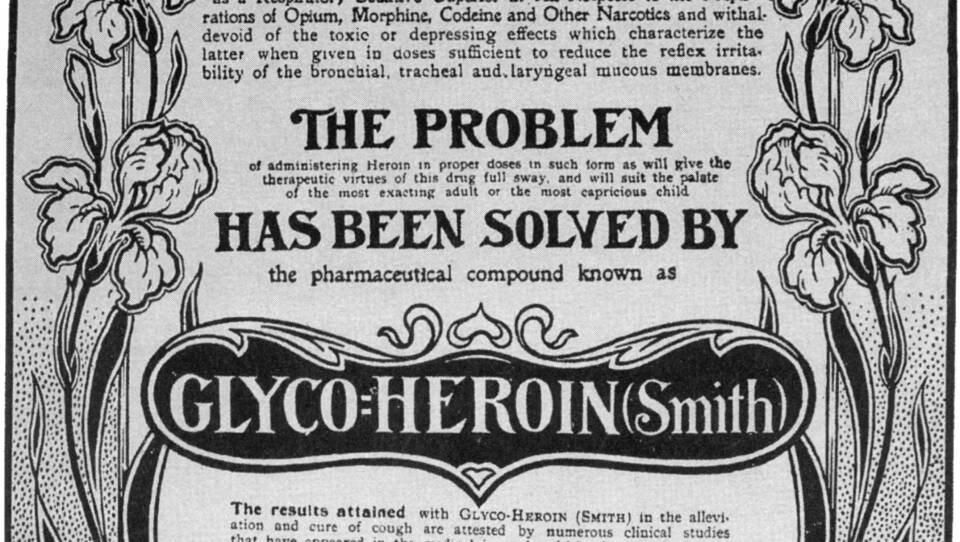In 1898, Bayer released two drugs that would change the world. The first, Aspirin, was available only with a prescription. The second was lauded as a miracle drug. It was available over-the-counter and Bayer poured money into marketing it.
They advertised to children, pregnant women and infants. Liquid versions of the drug were used as an answer to colds, sore throats, headaches, pneumonia and tuberculosis. It was given to soldiers to treat morphine addictions. It was sold in cough lozenges to the general public. For a couple years, heroin was one of the most popular medications in the United States.
It didn’t take long for people to start noticing that this miracle-drug wasn’t all it promised to be. Patients exhibited the same symptoms of addiction as morphine users. Babies born to mothers using heroin went through immediate withdrawal. But, it took Bayer until 1913, almost 20 years after they first released it, to stop advertising heroin as safe. By 1918, there were over 200,000 addicts in New York City alone.
The story of heroin is not a unique one. “Medicine advances slowly and painfully,” said Dr. Paul Offit, author of Pandora’s Lab: Seven Stories of Science Gone Wrong. Discovery isn’t always progress.
The scientists at Bayer were just hoping to find a non-addictive morphine replacement. When they first presented the drug at the 70th Congress of German Naturalists and Physicians, they received a standing ovation.
But what they didn’t do was test the drug, exhaustively, before they rolled it out. They tried heroin on rats and rabbits. They tried it on four men who worked at the company. They tried it on a few patients. And then they made it commercially available.
Offit says that you can find similar stories of scientific and medical negligence throughout history. One example? In 1955, doctors accidentally injected 120,000 children with a live polio virus.
"We just continued not to learn this lesson," he said.
Scientists, Offit says, mess up. And sometimes their mistakes have big consequences. But he also cautions against distrusting science and medicine.
“Over time, science will get it right because if your data are correct, it will be reproduced,” said Offit. “But, if you’re incorrect, then you’ll be shown to be incorrect.”
But even if science is always right, Offit does think that you should be skeptical of scientists.
“Because scientists get it wrong all the time,” he said. “But, science doesn’t. And that’s an important distinction.”
Over 4,000 scientific papers are published every day. “Some are great, some are awful, some are more or less mediocre,” Offit explained. “You can find a paper that claims anything.”
It can be overwhelming to imagine wading through that information to understand what’s right, and what’s wrong. But Offit says the best thing non-scientists can do is to wait. If it’s reproduced, then odds are, it’s good science.





